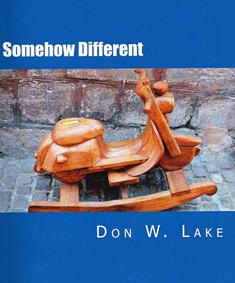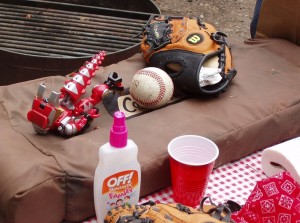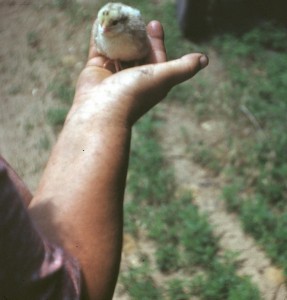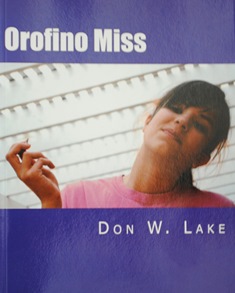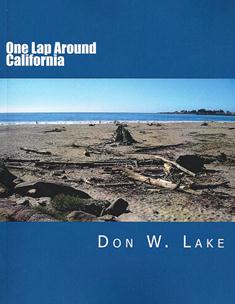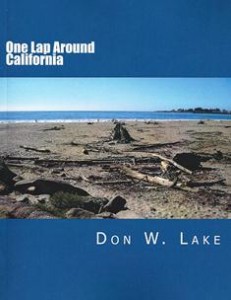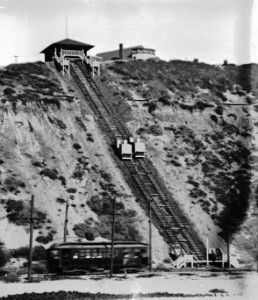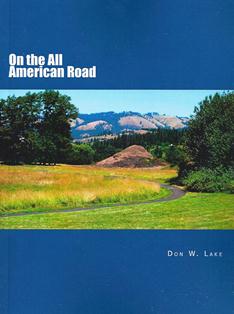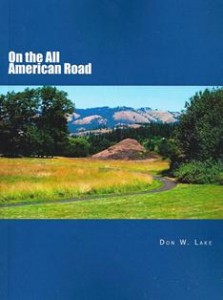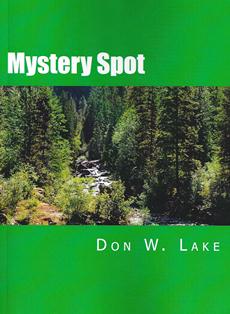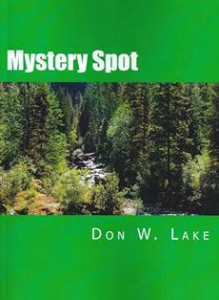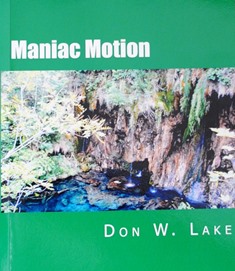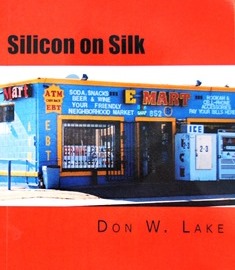 Yvette knew it was a crazy idea. How could anyone think a microchip, injected into a person’s body, could seek and destroy cancer cells? Still, there was nothing to lose. They’d cut off her boyfriend’s leg if it failed anyway. But, it worked. And it worked agin on her aunt. Then, when she tried to tell people her secret, no one believed her. Only her old friend, Elena, now deeply involved in the local gang and drug scene, offered any help at all. Together, they set off on an adventure to prove to the world that cancer was conquered.
Yvette knew it was a crazy idea. How could anyone think a microchip, injected into a person’s body, could seek and destroy cancer cells? Still, there was nothing to lose. They’d cut off her boyfriend’s leg if it failed anyway. But, it worked. And it worked agin on her aunt. Then, when she tried to tell people her secret, no one believed her. Only her old friend, Elena, now deeply involved in the local gang and drug scene, offered any help at all. Together, they set off on an adventure to prove to the world that cancer was conquered.
[toggle title_open=”Close Excerpt 1″ title_closed=”Excerpt 1″ hide=”yes” border=”yes” style=”default” excerpt_length=”0″ read_more_text=”Read More” read_less_text=”Read Less” include_excerpt_html=”no”]
Chapter 1
The envelope sat alone on the narrow table in the entry hall, face up, clearly showing the University of California at Santa Barbara Graduate School of Engineering logo in the upper left hand corner. Gabriella’s mother walked past it several times that sunny, San Diego spring day. Each time she did, she smiled and thought how proud she was of her eldest daughter. Even if that envelope didn’t hold what Gabby hoped it would, consideration was an achievement.
Gabby parked in the driveway a little after six, came in through the garage, and plopped down in a chair at the kitchen table. “That’s it Ma. I did it. Today was the last class at San Diego State. Finals next week and I’m done.”
“You should be happy.” “Just exhausted. Wow! My favorite. That really smells good. Something special happening tonight?”
“Maybe.” Maria Cabrera wiped her hands on her apron, retrieved the envelope from the hall, and set it in front of her daughter.
Gabriella picked it up. Her hands shook so much she needed both of them to hold it still enough to read.
“Aren’t you going to open it?”
“I’m scared, Ma. What if …” the hard bang of the front door slamming shut caused her to jerk her head around.
“Hi, Gabby. Hi, Ma. Hey, that smells good, what’s up?”
“How many times do I have to tell you not to slam the door?”
“Gotta celebrate. Won both the hundred and two-twenty today. Blew those Morse High girls away. They don’t call me Corvette for nothing. Whatcha got there Gabby?”
“The letter from UCSB.”
“Well open it,” Yvette said. “You’ve been waiting for it forever.”
Gabriella carefully slit open the envelope and removed the tri-folded letter. She unfolded it. As she read she began to slowly rise from her chair. Then, she leapt into the air, tossed the letter toward the ceiling, and screamed, “I’m in! They accepted me! And they gave me a technician’s job for twenty hours a week too. Woo-Hoo!”
Yvette wrapped her arms around her sister and gave her a bear hug.
Gabby collected the letter from the floor. “I can’t believe it. Me, in the Micro-Electronics department. Man. And my job’s in the Detector lab. How great is that?”
Both young women grabbed their phones and started texting. Maria picked up the handset with the twenty-foot extension cord, and began dialing. Less than an hour later Uncle Pedro and Auntie Beth arrived carrying a casserole overflowing with enchiladas. By dusk the Cabrera house was crawling with friends, neighbors, and relatives. Uncles Jack, Roberto, Dan, and Ben were playing Mariachi music around the fire pit. Laughter echoed everywhere.
Only Yvette and her six-foot-nine boyfriend, Daryl, sat quietly together. Every few minutes Yvette repositioned the ice pack on his outstretched leg. “My knee just hurts all the time. They say it’s just growing pains, but I know something’s wrong. It started hurting really bad at basketball camp. I just know there’s a problem in there,” he said.
“It’ll be okay. Don’t worry.” “It’s not broken. There’s something else. I wish they’d find out what. I hate not knowing.”
* * * * *
Seven weeks after her junior year ended, Yvette was still working for her Aunt Blanca. “You’re amazing,” Blanca told her that Monday morning. “No other high school kid has lasted this long. Keep up the good work. Only three more weeks until school starts.”
Yvette sighed, got out of her aunt’s car, and walked toward the first house of the day. She’d been on a crew that cleaned four houses a day, six days a week, all summer. “FAST AND THOROUGH’ was the motto, and fast and thorough was what she was during her work day. Tired was what she was every night.
That night, after finishing the day with the largest, most knick-knacky house of her entire schedule, she collapsed in a chaise lounge under the pepper tree in her backyard. Her phone rested on her lap, but she laid her head back and closed her eyes rather than start texting. The Laker’s theme song ring she’d programmed for Daryl shook her out of her reverie.
“Hello. How’d it go at the doctor?” “Cancer. They found bone cancer. Osteosarcoma.”
Yvette screamed.
“They may have to chop my leg off at the knee.” Yvette screamed and sobbed at the same time. Her mother pushed open the screen door and ran to her youngest daughter.
“ ‘Vette. ‘Vette, are you there?”
Maria snatched the phone out of Yvette’s shaking hands. “Hello. Who is this?”
“It’s me. Daryl.”
“What’s wrong? Yvette’s collapsed into a crying blob.”
“They told me its cancer. They may have to chop my leg off.”
Maria sank into a chair next to Yvette. “Oh no. I knew you were in pain.”
Yvette grabbed the phone back from her mother.
“Yes, Mrs. Cabrera. But it’s a good thing I was. Without the pain it may have gone on much longer without being detected.”
“Daryl. Say it isn’t so. Say you’re joking.”
“I wish I was. The pain was the thing. There’s something special about cancer cells that cause them to hurt, at least when they’re in joints and organs. It feels like acid or something was poured in there.”
“Acid.”
“Well I don’t know that it’s acid, but that’s what it reminds me of after watching all those scary movies.” “What are you going to do?”
“The doctor is going to try some stuff, he says there’s not much anyone can do, except get lucky or cut the leg off.”
Yvette screamed again.
* * * * *
A week before the fall quarter started, Gabby drove home for a weekend with her family. Yvette sprawled on the living room couch, waiting for her sister, and trying to recover from her last day of house cleaning until Saturday. After a noisy reunion, the dinner dishes were cleared, washed, and put away, Gabby got a box out of her duffel bag, and sat with her mother and sister at the kitchen table.
“You guys won’t believe the cool project they’ve got me working on in the Detector Lab.”
Gabby took a small bottle, sealed with a plastic cap, out of the box. “Ma, ‘Vette, this is the greatest invention of all time.”
“Come on Gabby. All Time?” Yvette said.
“Top ten anyway.” Gabby held the bottle up to the light. “See these little flecks in there? Well, those are special micro-circuits, not only in what they do, but how they’re made.”
“Very nice, honey,” Maria cooed.
“Listen, those circuits are built on silk. Silicon micro-circuits on a silk substrate. We call it ‘Silicon on Silk’.”
“So.” Yvette looked half interested, half bored.
“SO! You see, silk dissolves in blood. Sooooo, you put these into the blood stream and they go around measuring things, or detecting things, and the body just naturally gets rid of them a couple days later. Just like if you get some dirt or something in a cut. Isn’t that cool?”
“I guess,” Yvette said.
“Now these here, they even have some iron on them, so once they’re in the blood stream you can use a magnet to steer them to the place you’re interested in. Steerable Silicon on Silk.”
“And that’s good, because?” Yvette asked.
“Well,” Gabby hesitated. “These ones were supposed to detect acid, and when they did, emit a short stream of electrons that an external meter could detect. They didn’t detect acid particularly well, and the electron beam killed the cells it hit, but it did earn it a name.”
“Let me guess,” Yvette said. “Streaming Steerable Silicon on Silk.”
“Hey, ‘Vette, very good. You’re right. The whole unit is called SSSS, pronounced sis.”
“I’m still not clear on the concept,” Yvette said.
“It’s a research tool. First, you inject one of these into the blood, and steer it to a spot in the body. Then, if what the device is programmed to find gets found, it emits a stream of electrons. It’s as easy as that.”
“Let me see if I’ve got it now,” Yvette said. “First you shoot up, then you take it to a place that hurts, then it goes ZAP, and then the hurt is gone.”
“Yeah. Kinda. Sure.” Gabby said. Yvette jerked bolt upright in her chair. “Really?”
“Really.”
Yvette looked in the box. She counted five bottles in it, each holding six micro-circuits.
“I’ve been up there two months now,” Gabby said, “and already I can make these. In fact I made every one of these.”
Maria said, “You made these?”
“Yeah, Ma. The lab’s kinda like a special kitchen. I just follow the recipe, and then bake them.”
“My goodness.”
“These don’t work quite the way the professor wants them to. We’ll be starting a new design next week. That was lucky for me. It gave me time to learn without pressure. They all liked what I did.”
“I’m so proud of you,” Maria said.
“Since these are obsolete, I get to keep them as souvenirs. Cool, huh? The people at the Detector Lab are really great.”
Gabby put the sixth bottle back in the box. “For now, I’ll keep them here in my closet. My place in Goleta doesn’t even have room for an extra pair of shoes.”
Yvette took the box, carried it to the bedroom she and Gabby shared for sixteen years, and carefully put it on the closet’s top shelf. When she returned to the kitchen, she heard her sister saying, “The thing is, Ma, all this is a super-secret. Nobody can say anything about any of it. But, I may get to write up some of the technical descriptions for the patents. How about that?”[/toggle]
[toggle title_open=”Close Excerpt 2″ title_closed=”Excerpt 2″ hide=”yes” border=”yes” style=”default” excerpt_length=”0″ read_more_text=”Read More” read_less_text=”Read Less” include_excerpt_html=”no”]
Chapter 2
It took Yvette until lunch on Monday to find Elena. Once good friends, they’d drifted apart when Elena began dating a member of the Verde Cruz gang. Now all Yvette could be sure of was that Elena would know where to get what she needed.
Yvette finally saw her old friend when Elena walked into the cafeteria. Yvette slid into line next to her just before the pile of trays next to the salad bar. “Hi, Vette, been awhile. How ya doin’?”
“Movin’ fast.”
“I heard. You were all-city last spring, right?”
“Yeah. Got lucky. You still runnin’ with the Verde Cruz guys?”
“Still am. Once you start it’s hard to stop.”
“I can imagine.”
Neither spoke again until they’d each picked up a tray and set them on the three stainless steel bars in front of the Jell-O. “El, I need a little help. Can I ask you a favor?”
“Sure.”
“I’m gonna shoot-up. Can you get me a needle?”
The shorter girl turned and looked up into her old friend’s eyes. “Don’t do it. Especially you. Don’t do it.”
“It’s not what you think. Really.”
“It never is. Don’t do it.”
“The needle has to pass an object a hundredth of an inch wide. I think I need a special needle.”
“You’re right. They call those gutters. Weird for the first time.”
Yvette reached under the protective glass cover and slipped a Taco Salad onto her tray. “Can you get it? I’ll pay.”
Elena laughed. “Gear is free. You pay for what’s inside.”
“Um, I’ll be doing my own insides.”
“Oooooh, bad idea, Vette. You’re likely to kill yourself. Better to have a good supplier.”
“Can you get me what I need, even if I don’t buy anything?” “For you, Vette, sure. Meet me and Roberto in the parking lot after school tomorrow.”
* * * * *
Yvette arrived at the lot the next afternoon with her backpack slung over her shoulder and a leather briefcase big enough to hold two three-ring-binders in her hand. On her second scan of the cars in the lot she saw Elena leaning against the trunk of a candy-apple red, lowered, and flamed ’57 Chevy. Yvette waved, and then walked through a row of parked cars to meet her friend.
“Hi, El.”
“Hi Vette. I’ve got what you asked for, but I really gotta tell you again, it’s a really bad idea to make your own.”
“Got it.”
Elena held out a dark green, velvet box, about the size needed for a necklace. “Nice,” Yvette said.
Elena smiled. “Green velvet, the mark of the Verde Cruz. Everything’s first class.”
Yvette opened the box. Inside lay a milky, plastic syringe with gradations marked in CCs on one side. With the plunger depressed, it was about four inches long. Yvette snapped the box shut.
Elena then held out a second green velvet box, this one about the size needed for a bracelet. Yvette opened it to find three shiny silver needles, each embedded into a milky, plastic, threaded, circular block.
“Some assembly required,” Elena said. “You fill the syringe through the opening, and then screw the needle into it. Every time you use the needle you clean it. Boil it. The plastic won’t melt.”
Yvette examined the tip of one of the needles. It was cut on a diagonal, pointed and sharp, but with a large slot for the liquid to flow through. “That should do it.”
“It’s what you asked for.” Looks like I’ll need a pretty good vein for it.”
“Yeah, full-on mainline. Be careful.”
* * * * *
Daryl and Yvette sat side-by-side in the back of Daryl’s pick-up, leaning against the cab, their legs stretched out toward the tailgate. The Sycamore above them showed the first signs of fall in the yellow late afternoon sun. The happy squeals and laughs from the children playing on the climber at the other end of the parking lot washed over them. Yvette leaned over, kissed her boyfriend, and said, “Are you ready?”
“Yes.”
Yvette slid down until her lap was next to Daryl’s aching knee. She unzipped the leather case, took out the larger green velvet box, a small bottle of water, a pair of tweezers, and one of the bottles holding the Silicon on Silk micro-circuits. She propped the syringe, open end up, between her legs. She carefully picked up a micro-circuit with the tweezers and dropped one, and then a second, into the syringe. Then she poured enough water in to reach the 100CC mark. The tiny pieces of silk floated on the water. Slowly, making sure not to spill the liquid in the syringe, she removed a needle from the smaller case, and screwed it onto the syringe.
“Okay, I’ve got that part right. I think.”
Daryl nodded.
Then she took a cotton ball out of the case and handed it to Daryl. “When I pull the needle out, you press this down on the spot, and hold it there until the bleeding stops.”
“I will.”
Yvette then took a small horseshoe magnet out of the case, removed the iron bar held between the magnet’s two legs, and balanced the magnet on her lap. Next she removed a bungee cord from the case, wrapped it around Daryl’s thigh a few inches above his knee, twisted the ends together, and handed them to Daryl.
“Roll over. The vein we want is on the back of your knee.”
The tall boy rolled onto his side, exposing the back of his knee below his basketball shorts to Yvette.
“Good. Now twist and tighten the bungee cord. When I see the vein, I’m going to stick the needle into it. Go on, twist.”
After a few seconds, Yvette pushed the needle into a blue line in Daryl’s leg, and prayed. With one hand she held the magnet against the skin, keeping it just below where she thought the tip of the needle should be. With the other hand, she slowly depressed the plunger until it was empty.
“Okay, release the bungee and be ready to hold the cotton.”
A few seconds later, Daryl said, “Ready.”
Yvette gently pulled the needle out of the leg. “Got it,” Daryl said. Yvette then slowly slid the magnet along the back of Daryl’s leg until she came to the knee joint. Once there, she counted to ten, moved the magnet a half inch, counted to ten again, and repeated the procedure until the ends of the magnet had rested on every square inch of the knee. As she moved from spot to spot, she watched a purple blood bruise slowly spread across Daryl’s knee and creep up his thigh. “Did you feel anything? It looks ugly.”
“Nope, didn’t feel a thing.” Daryl leaned back against the cab.
Yvette unscrewed the needle, put it back in its box, put the syringe in its box, put the bar back across the magnet’s legs, and then put everything back into the leather case. When she slumped back against the cab, he put his arms around her, held her until she stopped shaking, and then gave her a long, gentle kiss.
“How did you know how to do all that?” he asked.
“I didn’t. I made it up.”
“Do you really think it’ll work?” She looked into his eyes. “No.”
“Me neither.”
Yvette added, “But no harm done. Those micro-circuits will dissolve and go away in a couple of days, no matter what.
* * * * *
Yvette’s phone began blaring the Laker’s theme song three hours before Daryl was to pick her up for the evening’s football game. “Hey, Vette, get on down to the gym. You’ve got to see this.”
Ten minutes later Yvette walked into the gym, passed the practicing girls’ volleyball teams, and entered the side of the auxiliary gym area set aside for basketball. One group of boys were playing five-on-five, full court. Several other players sat by courtside awaiting their turn. Yvette leaned against the wall and watched.
Daryl, a full six-inches taller than anyone else, and almost a foot taller than the boy guarding him, dribbled beyond the three point line waving a play to his teammates. He took one step right, passed, spun, took two giant steps down the lane, caught the return pass, stopped, and shot a five-foot jumper.
“Too close!” yelled his defender.
“Sorry.” “Hey, man. You’re too tall. You gotta stay outside to make things fair.”
“Sorry. It’s been awhile.”
After Daryl’s team made their eleventh basket, the losers left the court, and Daryl rushed over to Yvette. “Did you see that? Did you?”
“Yeah. A little awkward, but not bad.”
“No, not that. I’m out here. No pain, nothing. Everything’s fine again. Isn’t that great? Gotta get back out there. Pick you up at seven.”[/toggle]
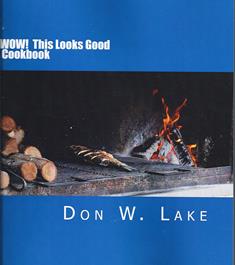 Trying new recipes is exciting, finding them exhilarating. Adventurous cooks endlessly clip and save new recipes, recipes they think look really good. When my pile reached a foot high, I knew it was time to do something … the answer is this cookbook. A collection of recipes, presented just the way they were piled in my kitchen cabinet, with only the anticipation of discovering what could be next as organization. Enjoy!
Trying new recipes is exciting, finding them exhilarating. Adventurous cooks endlessly clip and save new recipes, recipes they think look really good. When my pile reached a foot high, I knew it was time to do something … the answer is this cookbook. A collection of recipes, presented just the way they were piled in my kitchen cabinet, with only the anticipation of discovering what could be next as organization. Enjoy!